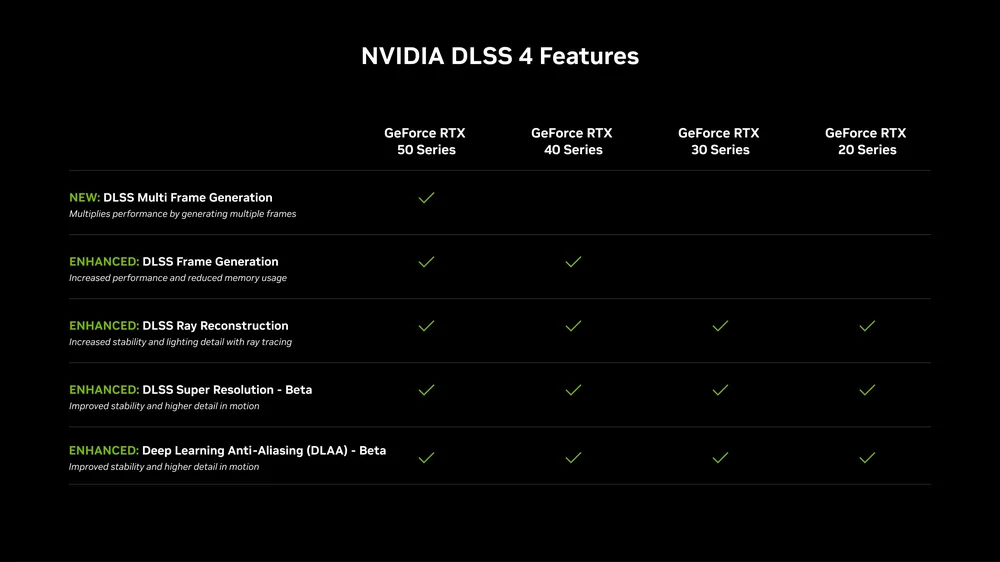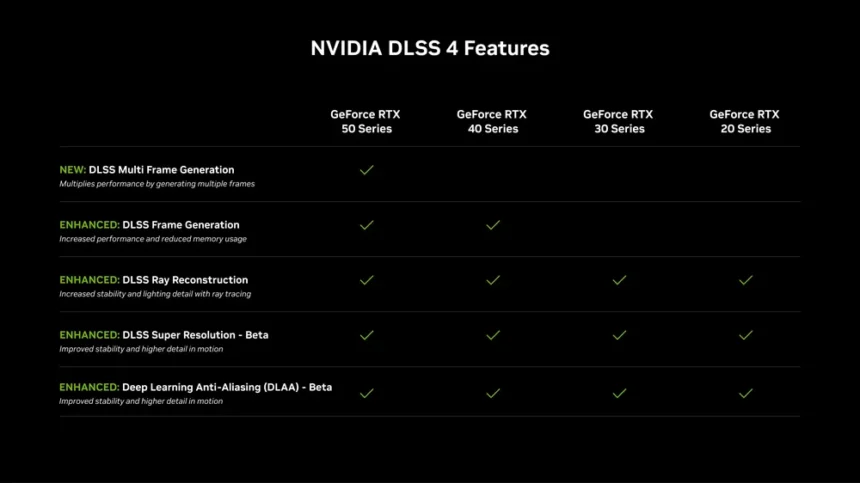In the ever-evolving world of computer graphics, NVIDIA continues to sit at the forefront of innovation. With the recent unveiling of the GeForce RTX 50 Series, powered by the new Blackwell architecture, NVIDIA is not just pushing the boundaries of what’s possible in gaming and content creation—it’s reshaping the entire landscape. Leveraging next-generation AI capabilities, improved ray tracing performance, and unmatched power efficiency, the RTX 50 Series is more than just a graphics card upgrade; it’s a leap into the future.
The Evolution of NVIDIA Graphics: A Legacy of Performance
To appreciate the magnitude of the RTX 50 Series, it’s important to reflect on NVIDIA’s legacy. Since the release of the first GeForce GPU in 1999, NVIDIA has consistently set industry standards. With each new generation—from the GTX 10 Series to the Turing-powered RTX 20 Series and the Ampere-based RTX 30 Series—we’ve witnessed significant leaps in performance, real-time ray tracing, and DLSS (Deep Learning Super Sampling).
The RTX 40 Series, based on the Ada Lovelace architecture, brought another wave of advancements with even more efficient DLSS 3 and better performance per watt. But now, NVIDIA is taking another massive step forward with the RTX 50 Series, built on the highly anticipated Blackwell GPU architecture.
Introducing the Blackwell Architecture: The AI Powerhouse
Named after mathematician David Blackwell, the new Blackwell architecture is a masterpiece of engineering and design. It marks NVIDIA’s most AI-capable consumer GPU architecture yet, integrating advanced tensor cores and streamlined data pipelines that make real-time AI inference possible at speeds never before seen in gaming-grade GPUs.
The RTX 50 Series GPUs are engineered not just for rendering polygons and lighting effects, but for intelligent prediction, content generation, and immersive world-building. With the inclusion of next-gen tensor cores and the newest iteration of CUDA cores, Blackwell-based GPUs can handle real-time AI tasks, generative neural rendering, and physics-based simulations with astounding ease.
AI in Gaming: What RTX 50 Brings to the Table
AI is becoming an integral part of game development and gameplay. With the RTX 50 Series, NVIDIA is making sure that gamers get a taste of what’s next. Expect smarter NPC behavior, real-time procedural content generation, and environments that react dynamically to player actions—all powered by on-GPU AI.
DLSS 4.0, launching exclusively with the RTX 50 Series, is a major leap over its predecessor. While DLSS 3 introduced frame generation, DLSS 4 takes it a step further with predictive AI frame synthesis, dramatically improving frame rates while maintaining ultra-sharp image quality. This means that even the most demanding AAA titles will run smoothly at 4K and beyond, with ray tracing fully enabled.
Content Creation Unleashed: A Boon for Designers and Streamers
NVIDIA’s RTX 50 Series is a godsend for content creators. Video editors, 3D modelers, and streamers will benefit enormously from the AI-enhanced features embedded directly into the hardware. Features like AI-enhanced color grading, automated scene transitions, real-time video upscaling, and neural rendering drastically reduce post-production time and elevate content quality.
Creators using tools like Adobe Premiere Pro, Blender, and DaVinci Resolve will find unprecedented acceleration in rendering times and project workflows. NVIDIA Studio drivers ensure compatibility and stability, providing professional-grade support right out of the box.
Energy Efficiency and Performance per Watt
With growing concerns about power consumption, NVIDIA has made power efficiency a cornerstone of the RTX 50 Series. Thanks to the Blackwell architecture’s advanced chip design and optimized silicon pathways, RTX 50 GPUs deliver up to 2.5x performance-per-watt compared to previous generations.
This is especially significant for gamers and creators who demand top-tier performance without skyrocketing electricity bills or excessive heat generation. Improved thermal dynamics and smarter power management features mean these GPUs run cooler and quieter, even under heavy load.
A New Standard for Ray Tracing
Ray tracing has come a long way since its mainstream debut. The RTX 50 Series introduces third-generation RT cores capable of handling full-scene path tracing in real-time. This means every ray of light, shadow, and reflection is calculated with stunning realism.
Coupled with AI-driven denoising and DLSS 4, the RTX 50 Series delivers movie-quality visuals in real-time gameplay. Gamers can enjoy titles like Cyberpunk 2077, Portal RTX, and upcoming AAA releases in their most visually spectacular form.
VR and the Metaverse: Enhanced by NVIDIA
Virtual reality and the metaverse are becoming increasingly relevant, and NVIDIA is prepared. The RTX 50 Series supports ultra-low latency rendering, improved VR headset compatibility, and foveated rendering techniques powered by AI to enhance immersion without compromising performance.
With these advancements, virtual worlds feel more tangible, interactions more responsive, and simulations more believable. This is not only great for gaming but also for training simulations, virtual events, and architectural visualizations.
Future-Proofing with PCIe 5.0 and GDDR7

The RTX 50 Series supports the latest in hardware standards. With PCIe 5.0 compatibility and next-gen GDDR7 memory, these GPUs ensure that you’re not just buying a card for today, but investing in the future.
GDDR7 offers higher memory bandwidth, lower latency, and better thermal management. This makes the RTX 50 Series ideal for 8K gaming, high-resolution content creation, and AI-intensive workloads.
Ecosystem Integration: NVIDIA Reflex, Broadcast, and Omniverse
NVIDIA’s strength lies not only in its hardware but also in its ecosystem. Technologies like NVIDIA Reflex reduce input lag for competitive gamers, while NVIDIA Broadcast transforms your room into a professional studio with AI noise reduction, virtual backgrounds, and auto-framing.
NVIDIA Omniverse, a platform for real-time collaboration in 3D design and simulation, gets a major boost with the RTX 50 Series. Designers, engineers, and creators can collaborate on complex scenes with near-instant feedback and updates.
Pricing and Availability
While exact pricing details for the full RTX 50 lineup are still being finalized, NVIDIA has confirmed that flagship models like the RTX 5090 and RTX 5080 will launch first, followed by more budget-friendly options. As always, pricing will vary based on manufacturer (ASUS, MSI, Gigabyte, etc.) and regional availability.
Still, one thing is certain: the performance-to-price ratio is set to redefine expectations in the GPU market.
The Competition: How AMD and Intel Stack Up
The RTX 50 Series clearly raises the bar, but competition remains fierce. AMD’s upcoming RDNA 4 architecture and Intel’s continued development of the Arc GPU series mean that NVIDIA must stay vigilant. However, with the AI integration, mature software ecosystem, and performance benchmarks we’ve seen so far, NVIDIA retains a strong edge.
Why the RTX 50 Series Is a Game Changer
The launch of the NVIDIA GeForce RTX 50 Series is more than just another product release—it’s a major milestone in the evolution of graphics technology. From next-level AI capabilities to stunning ray-traced visuals and unmatched efficiency, the RTX 50 Series stands as a testament to what modern GPUs can achieve.
Whether you’re a hardcore gamer, a content creator, or a tech enthusiast, the RTX 50 Series offers something revolutionary. NVIDIA isn’t just leading the graphics card race; it’s defining the future of visual computing.
As the gaming and digital content world continues to evolve, having the right hardware becomes essential. And with the RTX 50 Series, NVIDIA makes one thing abundantly clear: the future is here, and it’s powered by AI.
Stay tuned for benchmarks, reviews, and hands-on performance tests as the cards hit the market. If you’re planning an upgrade, the RTX 50 Series should be at the very top of your wishlist.

